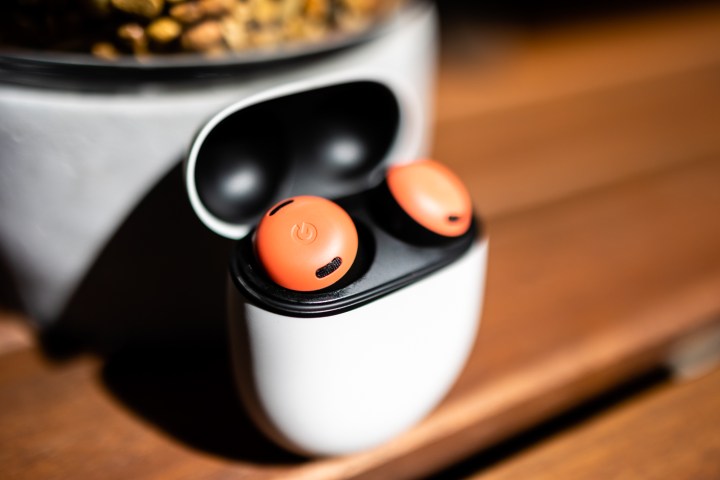
Google has promised some cool updates for its Pixel Buds Pro noise-canceling wireless earbuds, including conversation detection, lower latency for gaming, and a way to keep an eye on safe listening levels. It also said that if you pair the Pixel Buds Pro to Google’s new Pixel 8 and Pixel 8 Pro smartphones, you’ll get better call quality thanks to Bluetooth Super Wideband. In theory, Google’s right.
In practice, it might be a different story.
Bluetooth Super Wideband is part of the new family of features introduced with Bluetooth LE Audio and it dedicates more bandwidth to the voice portion of a phone’s Bluetooth connection. Just like using a hi-res audio Bluetooth codec like LDAC or aptX Adaptive can provide more bandwidth than SBC or AAC (and therefore preserve more audio information), Super Wideband creates the potential for greater fidelity by increasing the amount of voice data that can be passed from your earbuds to your phone.
Improving Bluetooth call quality through higher bandwidth isn’t a new idea. Qualcomm’s Snapdragon Sound platform provides a similar boost via its aptX Voice feature, but in order to benefit from it, both the wireless earbuds (or headphones) and the Android phone need to support Snapdragon Sound.
But there’s more to audio quality than just bandwidth. When a device uses hi-res codecs for music, it’s trying to preserve a high level of resolution that’s already present in the source content. If you play hi-res lossless FLAC music on Amazon Music or Tidal, Bluetooth codecs like LDAC and aptX Adaptive will preserve more of that detail than other codecs. However, if you play highly compressed, lossy MP3 tracks, hi-res codecs can’t magically make them sound better.

The question is this: How much resolution is present in our voices? The answer very much depends on the conditions (is it a windy day? is there a lot of noise around us?), the microphones (is there just one, or is there an array of mics, and how good are they at picking up speech?) and the earbuds’ noise suppression algorithms (some are aggressive and can reduce voice quality while dealing with unwanted noise, while others aren’t aggressive enough).
All of these factors affect the starting point of voice quality, long before the benefits of Super Wideband kick in.
When I reviewed the Google Pixel Buds Pro, I felt they did a decent job with voice quality when indoors, but their noise suppression software wasn’t as effective when dealing with outside sounds. Adding Super Wideband means more of the captured sound (whether it’s good or bad) will be transmitted.
The best wireless earbuds for call quality include Jabra Elite 7 Pro, AirPods Pro Gen 2, and Status Audio Between 3ANC — three models that perform very well under a variety of conditions, even without the help of Bluetooth Super Wideband.
The bottom line is this: Bluetooth Super Wideband may indeed maximize the amount of available bandwidth for voice transmission, but the quality of the voice being transmitted is subject to many other factors. Under optimal conditions, it could improve call quality on the Pixel Buds Pro, but it’s not necessarily going to improve it across the board.
As soon as we get a chance to test the Google Pixel Buds Pro using Bluetooth Super Wideband, we’ll let you know how much of a difference the technology makes.
Editors' Recommendations
- Google Black Friday deals: Save on Pixel 7, Pixel Buds and Pixel Watch
- Apple AirPods Pro 2 vs. Google Pixel Buds Pro
- A Redditor got the Google Pixel Buds Pro early — here are their impressions
- Google has stopped selling the Pixel Buds in the U.S. and Canada
- Google Pixel Buds A-Series hands-on review: Same buds, way better price

